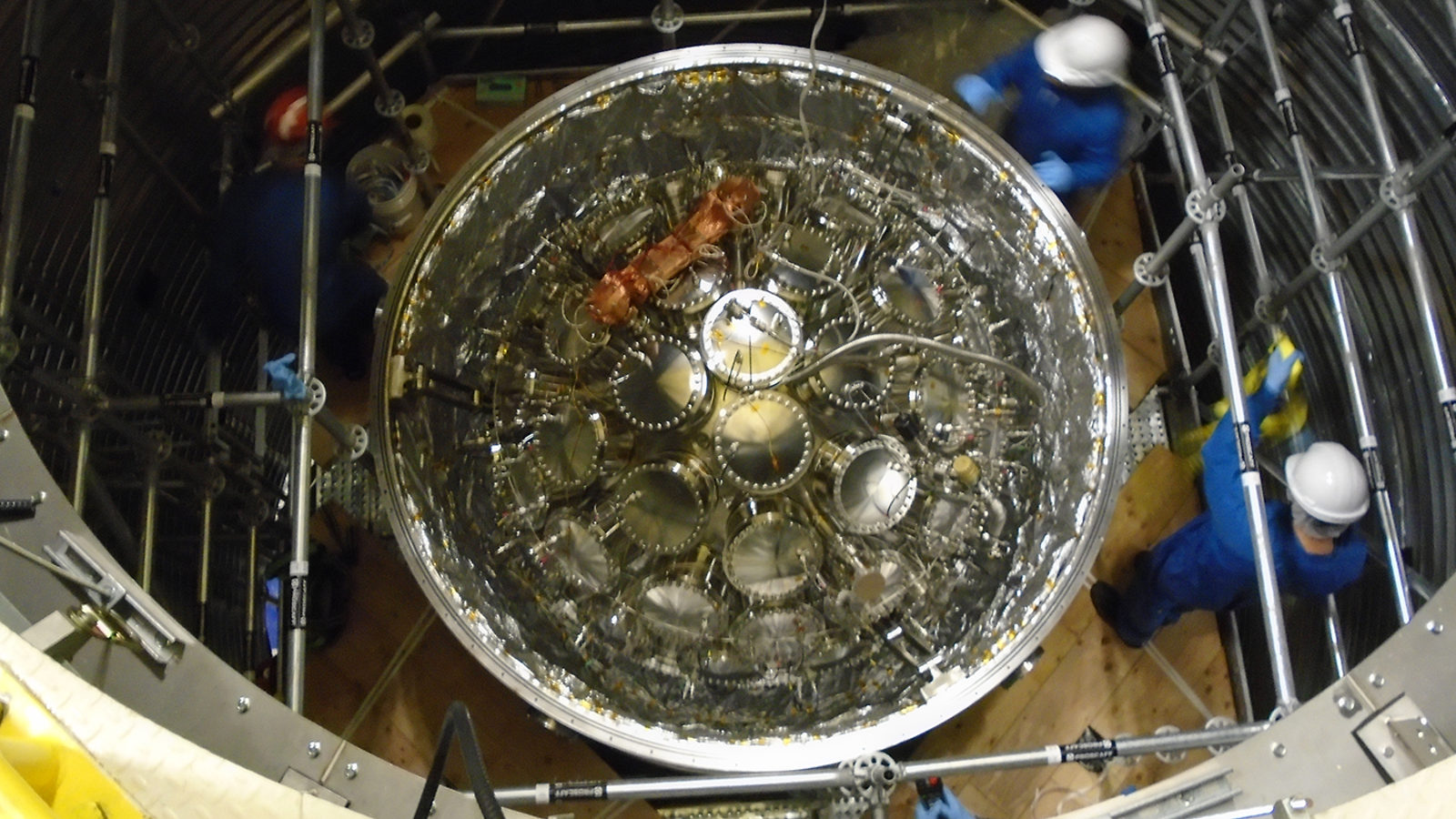Getting to an experimental cavern 6800 feet below the surface in Sudbury, Ontario, requires an unusual commute. The Cage, an elevator that takes people into the SNOLAB facility, descends twice every morning at 6 a.m. and 8 a.m. Before entering the lab, individuals shower and change so they don’t contaminate the experimental areas.
A thick layer of natural rock shields the clean laboratory where air quality, humidity and temperature are highly regulated. These conditions allow scientists to carry out extremely sensitive searches for elusive particles such as dark matter and neutrinos.
The Cage returns to the surface at 3:45 p.m. each day. During the winter months, researchers go underground before the sun rises and emerge as it sets. Steve Linden, a postdoctoral researcher from Boston University, makes the trek every morning to work on MiniCLEAN, which scientists will use to test a novel technique for directly detecting dark matter.
“It’s a long day,” Linden says.
Scientists and engineers have spent the past eight years designing and building the MiniCLEAN detector. Today that task is complete; they have begun commissioning and cooling the detector to fill it with liquid argon to start its search for dark matter.
Though dark matter is much more abundant than the visible matter that makes up planets, stars and everything we can see, no one has ever identified it. Dark matter particles are chargeless, don’t absorb or emit light, and interact very weakly with matter, making them incredibly difficult to detect.
Spotting the WIMPs
MiniCLEAN (CLEAN stands for Cryogenic Low-Energy Astrophysics with Nobles) aims to detect weakly interacting massive particles, or WIMPs, the current favorite dark matter candidate. Scientists will search for these rare particles by observing their interactions with atoms in the detector.
To make this possible, the detector will be filled with over 500 kilograms of very cold, dense, ultra-pure materials—argon at first, and later neon. If a WIMP passes through and collides with an atom’s nucleus, it will produce a pulse of light with a unique signature. Scientists can collect and analyze this light to determine whether what they saw was a dark matter particle or some other background event.
The use of both argon and neon will allow MiniCLEAN to double-check any possible signals. Argon is more sensitive than neon, so a true dark matter signal would disappear when liquid argon is replaced with liquid neon. Only an intrinsic background signal from the detector would persist. Scientists would like to eventually scale this experiment up to a larger version called CLEAN.
Overcoming obstacles
MiniCLEAN is a small experiment, with about 15 members in the collaboration and the project lead at Pacific Northwest National Laboratory. While working on this experiment underground with few hands to spare, the team has run into some unexpected roadblocks.
One such obstacle appeared while transporting the inner vessel, a detector component that will contain the liquid argon or neon.
“Last November, as we finished assembling the inner vessel and were getting ready to move it to where it needed to end up, we realized it wouldn’t fit between the doors into the hallway we had to wheel it down,” Linden explains.
When this happened, the team was faced with two options: somehow reduce the size of the vessel, or cut away a part of the door—not a simple thing to do in a clean lab. Fortunately, temporarily replacing some of the vessel’s parts reduced the size enough to make it fit. They got it through the doorway with about an eighth of an inch clearance on each side.
“What gives me the energy to persist on this project is that the CLEAN approach is unique, and there isn’t another approach to dark matter that is like it,” says Pacific Northwest National Laboratory scientist Andrew Hime, MiniCLEAN spokesperson and principal investigator. “It’s been eight years since we starting pushing hard on this program, and finally getting real data from the detector will be a breath of fresh air.”



